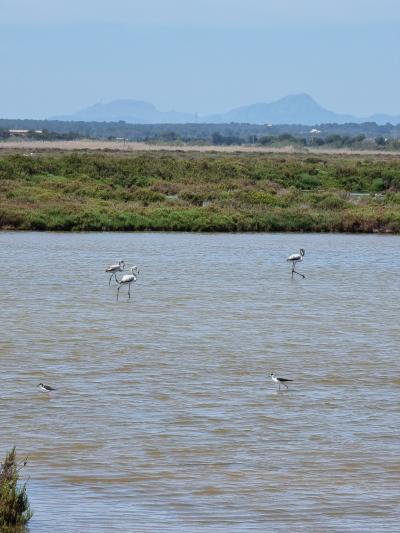In what ways does the wetland ecosystem help to prevent soil erosion along the coast near Es Trenc beach?
Similar Topics
wetland ecosystem
soil erosion prevention
coastal buffer
salt marshes
plant roots
wave energy absorption
soil stabilization
healthy vegetation
The wetland ecosystem near Es Trenc beach plays a crucial role in preventing soil erosion along the coast by acting as a natural buffer between the land and the sea. These wetlands consist of a diverse array of salt marshes, lagoons, and reed beds, which help to stabilize the shoreline. The dense network of plant roots in this area binds the soil and sand particles tightly together, reducing the likelihood of them being washed away by waves or strong winds. This natural reinforcement protects the coastline from the direct impact of storm surges and high tides, preserving the integrity of the beach and surrounding habitats.
Furthermore, the wetlands act as a spongy interface that absorbs and dissipates wave energy. Unlike hard coastal structures, the soft vegetation can flex and bend, which lessens the force of incoming waves before they reach the shore. This energy reduction prevents the intense scouring that typically strips away topsoil in unprotected areas. The accumulation of organic matter and sediment trapped by wetland plants also helps to build up the soil level gradually, encouraging further settlement of vegetation and enhancing soil stability over time.
Additionally, the wetland serves as an essential habitat for a variety of organisms that contribute indirectly to soil preservation. Crustaceans and mollusks living within the sediments help to improve soil structure and nutrient cycling, fostering healthy plant growth. Healthy vegetation cover not only anchors the soil but also reduces wind erosion, which can be particularly damaging in exposed coastal zones like those near Es Trenc. The synergy between biological activity and physical environment in these wetlands ensures a resilient coastline, maintaining both its ecological richness and its appeal as a natural destination for visitors.
Furthermore, the wetlands act as a spongy interface that absorbs and dissipates wave energy. Unlike hard coastal structures, the soft vegetation can flex and bend, which lessens the force of incoming waves before they reach the shore. This energy reduction prevents the intense scouring that typically strips away topsoil in unprotected areas. The accumulation of organic matter and sediment trapped by wetland plants also helps to build up the soil level gradually, encouraging further settlement of vegetation and enhancing soil stability over time.
Additionally, the wetland serves as an essential habitat for a variety of organisms that contribute indirectly to soil preservation. Crustaceans and mollusks living within the sediments help to improve soil structure and nutrient cycling, fostering healthy plant growth. Healthy vegetation cover not only anchors the soil but also reduces wind erosion, which can be particularly damaging in exposed coastal zones like those near Es Trenc. The synergy between biological activity and physical environment in these wetlands ensures a resilient coastline, maintaining both its ecological richness and its appeal as a natural destination for visitors.
🧩 Related Questions
Related Question
What insights about self-realization from Joan Mascaró's work might help travelers on their own journeys of personal discovery?
Related Question
In what ways do local markets and stores in Mallorca promote organic goods to consumers?
Related Question
What role do feral goats play in maintaining the landscape and vegetation structure of Mallorca?


